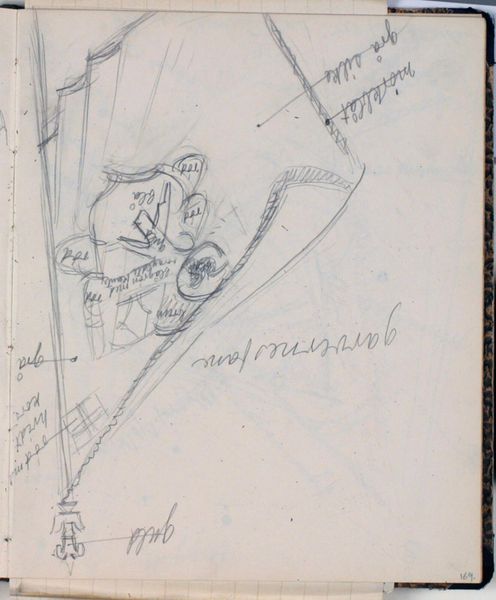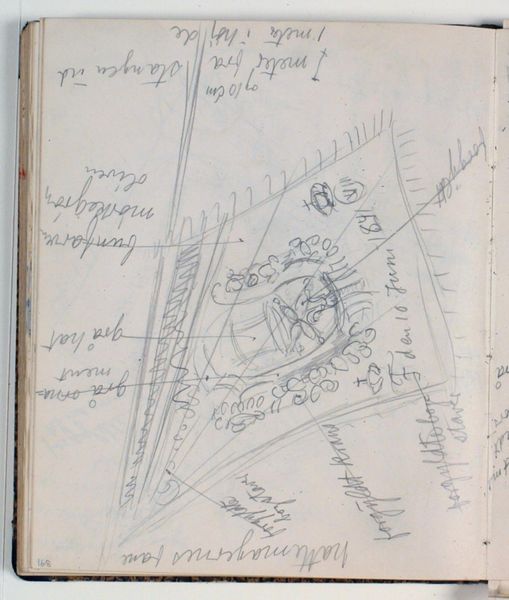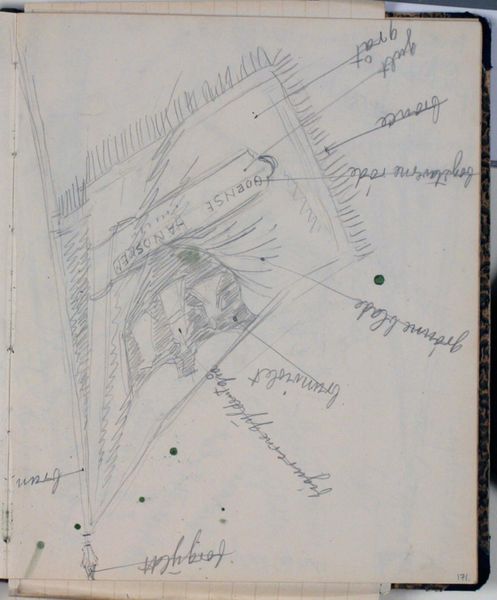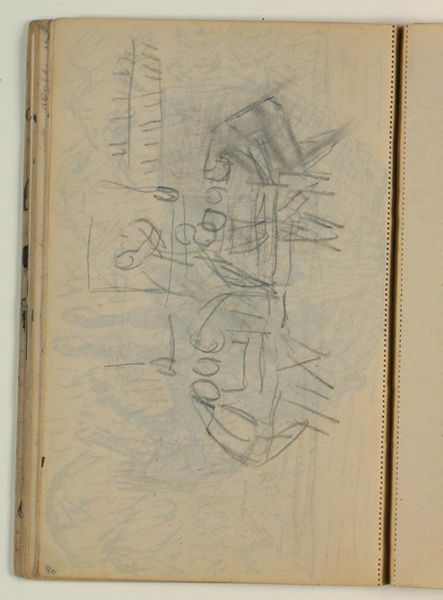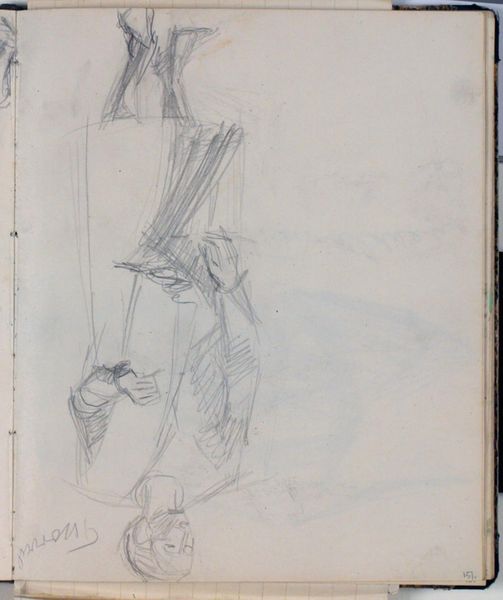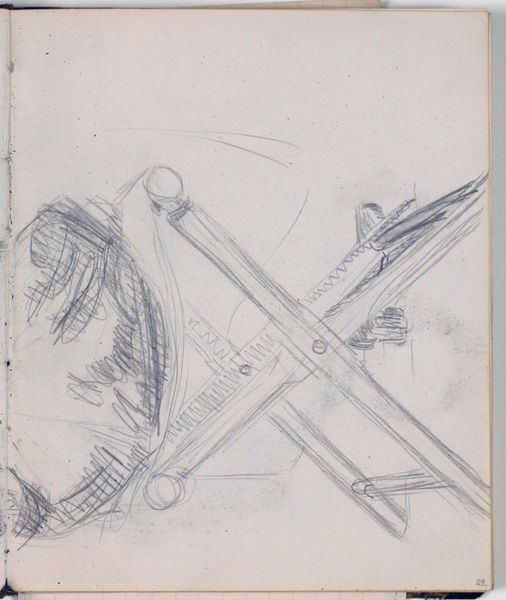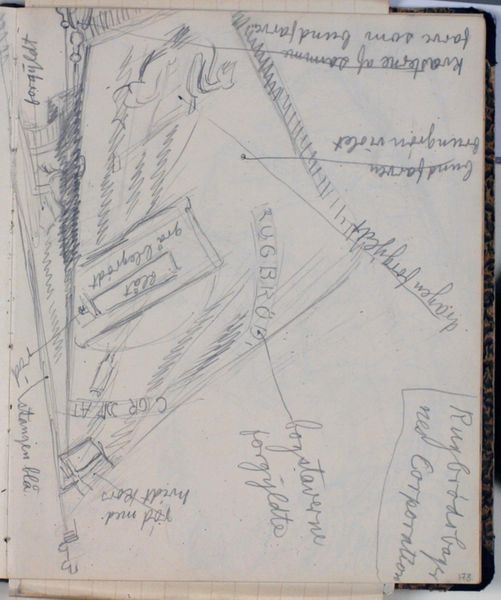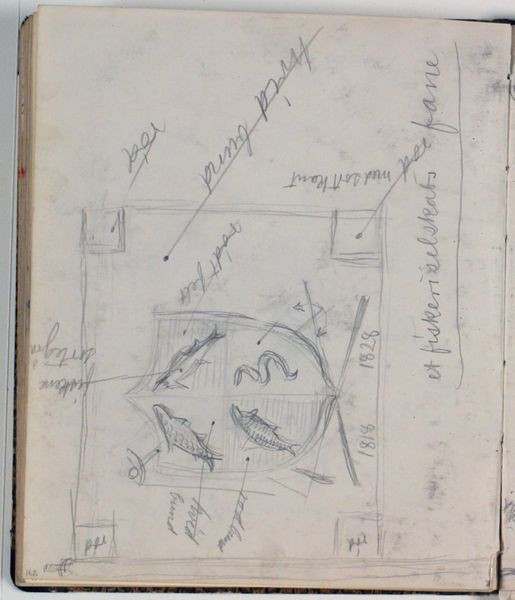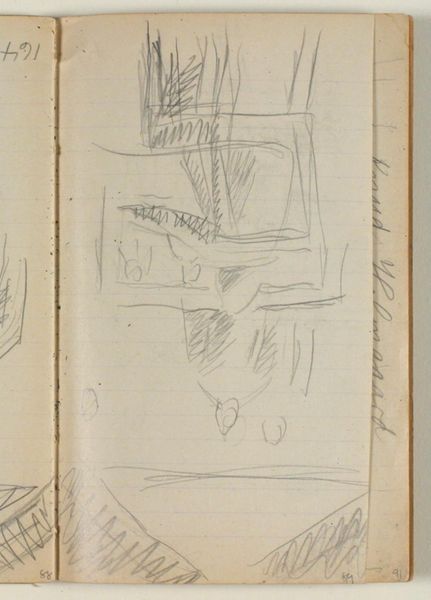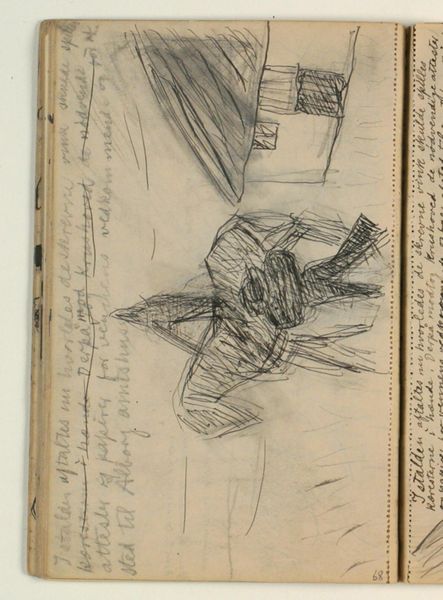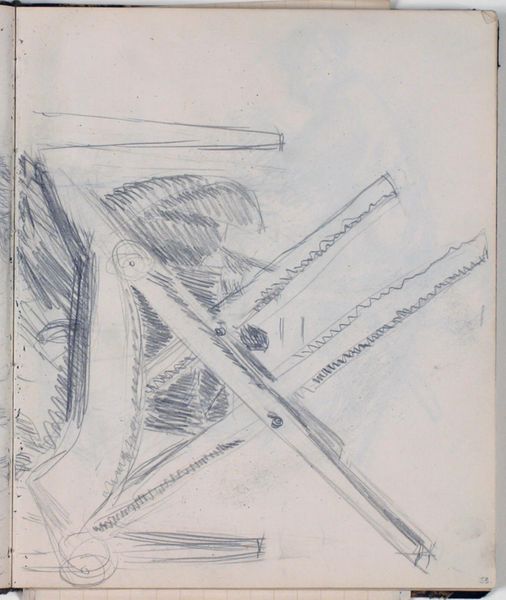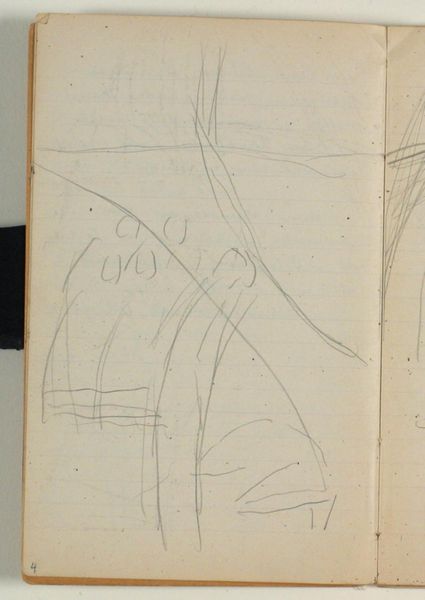
Studie af rebslagerlaugets fane. Farveangivelser 1930 - 1936
0:00
0:00
drawing, paper, pencil
#
drawing
#
paper
#
geometric
#
pencil
#
line
Dimensions: 226 mm (height) x 185 mm (width) x 112 mm (depth) (monteringsmaal), 221 mm (height) x 184 mm (width) (bladmaal)
Curator: It's interesting, isn't it? This is a pencil drawing on paper by Niels Larsen Stevns, titled "Studie af rebslagerlaugets fane. Farveangivelser"—roughly translated, "Study of the Rope Makers' Guild Flag. Color indications." It's estimated to have been made sometime between 1930 and 1936. Editor: Immediately, I see a delicate and almost ephemeral sketch, its rawness speaking to an exploratory quality, but there are elements of constraint. Curator: Indeed. I'm drawn to the marks, the evidence of process. You can see how the artist is working out the composition, the layering of the lines. It offers insight into the banner's construction—its materials and dimensions. Rope makers clearly required a potent symbol for their production. Editor: Absolutely. I also see notes around the geometric composition: descriptions such as "blood red" and "gilded hand-crank," implying symbolism inherent in both color and action, which relates directly to the laborers and this particular craft, this guild. What could that blood represent within the cultural history of this Danish trade? What hierarchies are visually signaled by "the king" and "queen"? Curator: The inscriptions add another layer. Stevns is clearly concerned with the precise visual language—a symbolic shorthand of sorts. The materials here, humble as they are, belie the social weight that banners and flags often carried—a declaration of power through visual representation. These tools and hues solidify identity. Editor: Yes, the very choice of medium and format also seems to speak to the preliminary nature of the project— perhaps more like an evolving experiment, both a deeply historical study and political consideration on cultural memory-making in relation to art. Are flags just simple cloth objects? Curator: Perhaps this sketch reminds us that no object is truly simple when we start digging into its construction, materials, and purpose within a specific societal context. Editor: Right, there's an important exchange occurring here between labor, gender, history and representation – it underscores the layers that both the medium and object have when explored. Curator: So, it goes far beyond simple geometry and raw materials—it is actually quite rich, isn't it? Editor: Yes, indeed. Thank you for offering that lens.
Comments
No comments
Be the first to comment and join the conversation on the ultimate creative platform.
